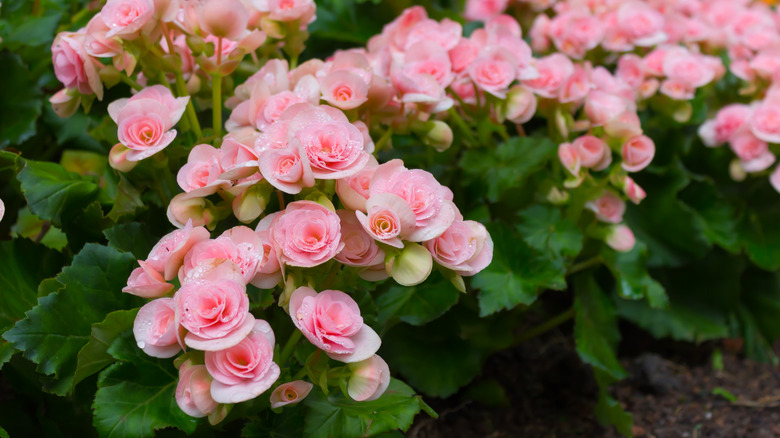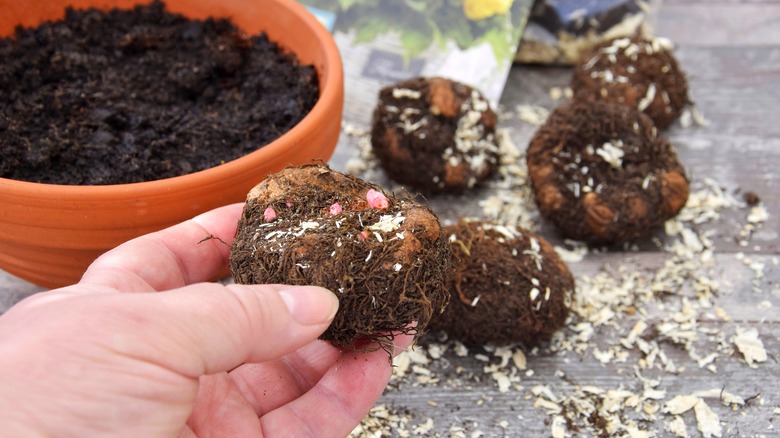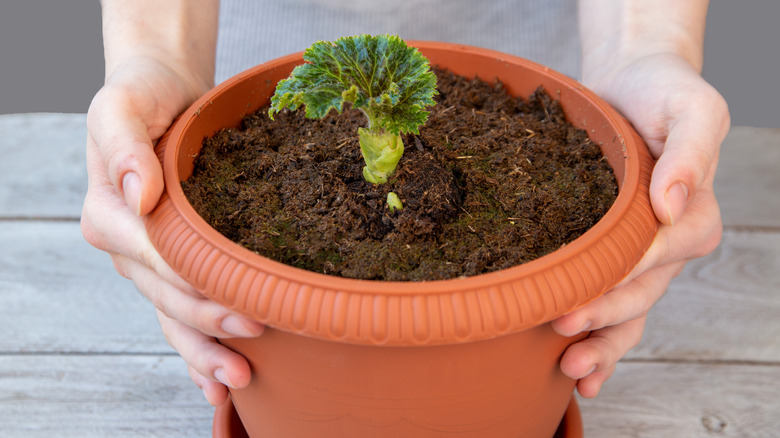Choose This Beginner-Friendly Begonia Variety For Beautiful Fall Flowers
If you don't want the arrival of fall to bring an abrupt end to your beautiful garden display, you can always grow plants that will stay around a little longer. There are a number of fall-blooming flowers that can thrive in the shady areas of your garden to keep the color going as the weather cools off. Tuberous begonia (Begonia × tuberhybrida) is one such plant variety that grows flowers in a wide range of colors (such as white, orange, pink, and yellow), and blooms from summer to fall. Even though it may not be categorized as a low-maintenance plant, tuberous begonias are fairly simple to grow, especially if you like the idea of growing plants in containers. The breathtaking display that these plants put on –- whether they are in hanging baskets, garden beds, or containers –- makes growing and caring for tuberous begonias an incredibly rewarding experience.
Tuberous begonia is native to tropical South America, with large-sized tubers, hence its name. Despite being a perennial, this plant is often grown as an annual in harsher climates. With its lush foliage, the tuberous begonia is one of the best fall flowers to plant in pots. Its cascading growth habits make them highly suitable for hanging baskets too. Tuberous begonias tick all the boxes for becoming the showstoppers of your garden this autumn.
Planting tuberous begonias
Tuberous begonias are hardy in USDA zones 9 to 11. Although the best time for planting is in the spring to avoid damage from frost, you can grow these plants indoors early and take them out once the threat has passed. Start growing them indoors between eight to 12 weeks before the last frost date in your region.
If you're growing begonias from tubers, place the tubers about an inch below the garden soil with the round side facing down. If you're growing the tubers inside in a container, make sure the hollow part is kept away from water all the time, while the medium (peat moss or vermiculite) just covers the tuber and never gets too wet. Initially, keep the tubers in a place that receives indirect light, but shift them to a spot with bright light once they sprout. Keep in mind that the size of the plant depends on the size of the tuber you choose, so pick larger tubers for bigger plants.
Once the tuber grows its first two leaves, it can be replanted if you put it in well-drained soil and in a location that is safe from the afternoon sun and strong winds. Make sure you allow the plants to harden off for a few weeks before you make this transition. Place the tubers at least 8 to 12 inches apart to avoid the threat of powdery mildew or botrytis. To meet the plant's heavy feeding requirements during its entire growing season, use a dilute balanced fertilizer.
Caring for tuberous begonias
One of the most crucial elements in caring for tuberous begonias is proper watering habits. Avoid overwatering the plant as this can lead to rot and the formation of powdery mildew, especially if the foliage gets too wet. You cannot underwater them either. They are not drought tolerant. Only water the soil when it begins to feel slightly dry but make sure to water it consistently when it gets to that stage.
Tuberous begonias do not tolerate exposure to strong afternoon sun. They are also sensitive to hot temperatures (above 85 degrees) and high humidity levels, so you need to keep them away from the elements most of the time. Pruning is not a big requirement, but you should remove spent flowers to make the plants look healthy. Having said that, pinching back some varieties early in the growing season can lead to more blooming. Keep in mind that begonias can be toxic to your pets, so consider using DIY hanging planters to keep them out of reach.
These plants enter a winter dormancy phase, so you might have to dig up the soil and bring them indoors to help them overwinter. This is especially true if you're not growing the plants in zones 9 to 11, which are warm enough for them to survive and come back next year. Once the tubers drop off their leaves and stems, wrap them up in a paper bag and store them in a cool, dark place with the temperature somewhere around 50 degrees Fahrenheit until spring arrives.


